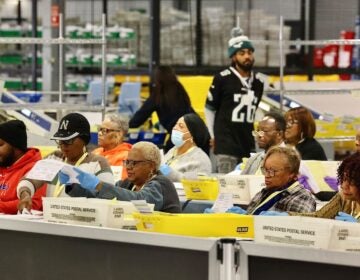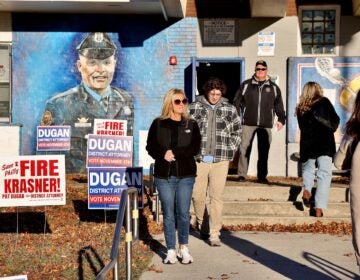Dems hope to capitalize on GOP exits from Pa. legislature
With so many state House and Senate Republicans likely leaving their seats this year, Pennsylvania's legislative races could present a big opportunity for Democrats.

Pennsylvania's House of Representatives has at least 18 members of its republican majority retiring or leaving their seats this year. (AP)
With at least 18 state House Republicans and four GOP senators likely leaving their seats this year, Pennsylvania’s legislative races could be a goldmine for Democrats.
Republicans have a 34-16 supermajority in Pennsylvania’s state Senate. And, in the House, they outnumber Democrats 120-81, with a vacancy in each party.
Two high-profile Republican retirements in the competitive Southeastern region give his caucus a fighting shot at flipping seats, said David Marshall with the Senate Democratic Campaign Committee.
Sen. Stewart Greenleaf is stepping down from the Montgomery and Bucks County seat he has kept Republican since 1978; and Sen. Charles McIlhinney is leaving his similarly moderate Bucks County office.
And, Marshall noted, those aren’t the only spots Democrats consider vulnerable.
“Our first look is going to be at the seven districts that are currently held by a Republican that Hillary Clinton won,” he said.
Marshall’s House counterpart, Nathan Davidson, said the situation is similar there.
He reported that House Democrats are targeting 19 GOP-held districts that tipped toward Clinton, and two more where Democratic row officers — the state attorney general, treasurer, and auditor general — won in 2016.
Virginia, Davidson said, could be the “canary in the coalmine” in terms of predicting how those races play out.
In 2005, the Virginia Democratic Party picked up six seats in the state’s House of Delegates. That was right before House Democrats in Pennsylvania did similarly well in the 2006 midterms. Davidson said he assumed if Virginia Democrats picked up five or six delegate seats in 2017, it would be a good sign for Pennsylvania’s House Democrats this year.
But then they picked up 15 seats, all but one of which Clinton had won.
“It’s almost too good to be a predictor,” Davidson acknowledged. “But they are one seat short of the majority now in Virginia, in one election cycle.”
“It’s not out of the realm of possibility for us to make a significant gain,” he added. “There are 21 seats in our top targets, and we are 20 seats down.”
Both Davidson and Marshall said it has been a strong recruiting year. Senate Democrats have candidates filed for 17 of the 18 seats with GOP incumbents, which means they’re just one candidate shy of running in all 25 races.
Marshall said it’s likely they will get a full slate for the first time in many years.
In the House, 166 candidates have filed. Davidson said they’re on track to surpass 175 — the highest tally in recent memory.
Representatives for the state Republican Party didn’t immediately respond to requests for comment on their own recruiting process and election strategy.
A recent state Supreme Court decision to declare Pennsylvania’s congressional maps unconstitutional is making election planning a little more uncertain than usual.
If the maps are redrawn significantly, different state lawmakers could decide to jump in or out of those races.
This story has been updated to correct the numbers of Democrats who have filed to run in the House and Senate. Senate Democrats have recruits running in 24 of 25 possible races, not 16 of 25. At the time of writing, House Democrats had 164 candidates, shy of the high water mark of 175 — not 64 and 75, respectively. That number has since changed further, and the recruit count now stands at 166.
WHYY is your source for fact-based, in-depth journalism and information. As a nonprofit organization, we rely on financial support from readers like you. Please give today.





